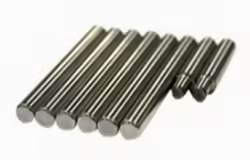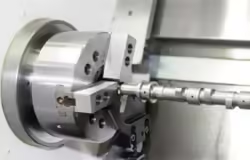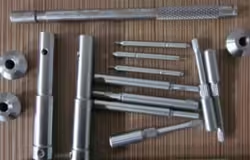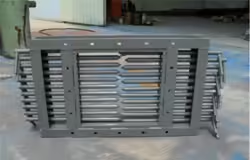
How to Heat Treat 4140 Steel for Industrial Applications
Introduction
Heat treating 4140 steel is a critical process in industrial applications where the material’s toughness, hardness, and wear resistance must be optimized. The heat treatment process for 4140 steel involves various stages, including pre-heating, hardening, tempering, and stress-relieving, each playing a vital role in achieving desired mechanical properties. This guide provides an in-depth look at how to heat treat 4140 steel, detailing the steps involved and the importance of each stage for industrial applications.
What is 4140 Steel?

4140 steel is a low-alloy steel containing chromium, molybdenum, and manganese. It is widely known for its versatility, offering a balance of strength, toughness, and wear resistance. Due to its composition, 4140 steel is commonly used in industrial applications such as the manufacturing of gears, crankshafts, bolts, and heavy machinery parts. One of the main reasons for its popularity is the ability to enhance its mechanical properties through heat treatment.
The Importance of Heat Treating 4140 Steel
Heat treating 4140 steel is essential for improving its mechanical properties to meet specific industrial requirements. The process helps in increasing hardness, enhancing toughness, and improving wear resistance. In industrial applications, untreated steel may not provide the performance necessary to withstand high loads, stress, or wear over time. Proper heat treatment allows 4140 steel to perform optimally in challenging environments.
How to Heat Treat 4140
Pre-Heating 4140 Steel
The pre-heating stage is crucial in ensuring that the steel is uniformly heated before hardening. The temperature used in pre-heating typically ranges from 400°C to 600°C (752°F to 1112°F). Pre-heating prevents thermal shock, which can cause cracking or warping during the hardening stage.
Hardening 4140 Steel
To harden 4140 steel, the material must be heated to its austenitizing temperature. This is generally between 840°C and 875°C (1544°F to 1607°F). Once the steel reaches this temperature, it is quenched, typically in oil, to lock its structure into a hard, martensitic form. Oil quenching reduces the risk of cracking compared to water quenching, although both methods can be used.
Tempering 4140 Steel
Tempering is performed after hardening to reduce the brittleness of the steel and improve its toughness. During tempering, 4140 steel is reheated to a temperature between 400°C and 700°C (752°F to 1292°F), depending on the desired properties. The steel is held at the tempering temperature for a period, which allows for stress relief and a balance between hardness and toughness.
The table below outlines the effects of tempering temperatures on the mechanical properties of 4140 steel:
| Tempering Temperature (°C) | Hardness (HRC) | Toughness (J) |
|---|---|---|
| 200 | 58 | Low |
| 300 | 52 | Moderate |
| 400 | 46 | Good |
| 500 | 40 | Excellent |
| 600 | 34 | Very High |
Choosing the right tempering temperature is essential for industrial applications where both hardness and toughness are critical.
Stress-Relieving 4140 Steel
Stress-relieving is an optional step in the heat treatment process. After tempering, 4140 steel can undergo stress-relief annealing to remove residual stresses caused by machining or welding. Stress-relieving is typically done by heating the steel to a temperature between 550°C and 700°C (1022°F and 1292°F). This process helps improve the steel’s stability and reduces the risk of warping or cracking during use.
Benefits of Heat Treating 4140 Steel for Industrial Applications
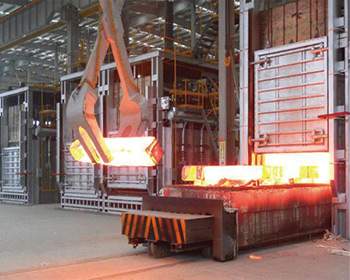
Heat treating 4140 steel offers numerous advantages for industrial applications, including:
- Improved Hardness: Heat treatment enhances the steel’s hardness, making it more resistant to wear and tear in demanding environments.
- Enhanced Toughness: By adjusting the tempering process, 4140 steel can achieve a balance between hardness and toughness, making it ideal for high-stress applications.
- Wear Resistance: Properly heat-treated 4140 steel exhibits excellent wear resistance, which is crucial for parts that experience constant friction or contact.
- Dimensional Stability: The stress-relieving process ensures that the steel remains dimensionally stable, even after heavy machining or welding.
Conclusion
Heat treating 4140 steel is an essential process that significantly improves its mechanical properties, making it suitable for industrial applications. By following the correct heat treatment procedures, including pre-heating, hardening, tempering, and stress-relieving, you can enhance the steel’s hardness, toughness, and wear resistance. These improvements are crucial for the performance of 4140 steel in demanding environments such as manufacturing, automotive, and heavy machinery industries.
FAQ
How to heat treat 4140 steel for maximum hardness?
To maximize the hardness of 4140 steel, the typical heat treatment process includes preheating, austenitizing, quenching, and tempering.
What are the steps involved in how to heat treat 4140?
The steps for heat treating 4140 include heating to the appropriate temperature, holding at that temperature, rapidly quenching, and then performing a tempering process.
How to heat treat 4140 to achieve better toughness?
To improve toughness in 4140, a lower quenching temperature can be chosen, along with appropriate tempering treatments.
How to heat treat 4140 using an oil quench?
After heating 4140 to the desired temperature, it should be quickly immersed in oil for quenching to achieve a balance of hardness and toughness.
Is there a specific temperature for how to heat treat 4140?
For 4140, the typical austenitizing temperature is between 850°C and 900°C (1560°F to 1650°F).
How to heat treat 4140 to prevent warping?
To prevent warping in 4140 during heat treatment, it is important to heat slowly, cool evenly, and minimize the quenching rate.
Can you explain how to heat treat 4140 in an electric furnace?
When heat treating 4140 in an electric furnace, heat it uniformly to the target temperature and then follow the standard quenching and tempering process.
How to heat treat 4140 for automotive applications?
For automotive applications, 4140 typically requires appropriate quenching and tempering to ensure strength and wear resistance.
What is the cooling rate when learning how to heat treat 4140?
The cooling rate is critical when learning how to heat treat 4140; oil quenching is generally milder than water quenching, which helps reduce internal stresses.
How to heat treat 4140 with minimal distortion?
To minimize distortion in 4140 during heat treatment, lower quenching temperatures should be used, and the heating and cooling processes should be uniform.

